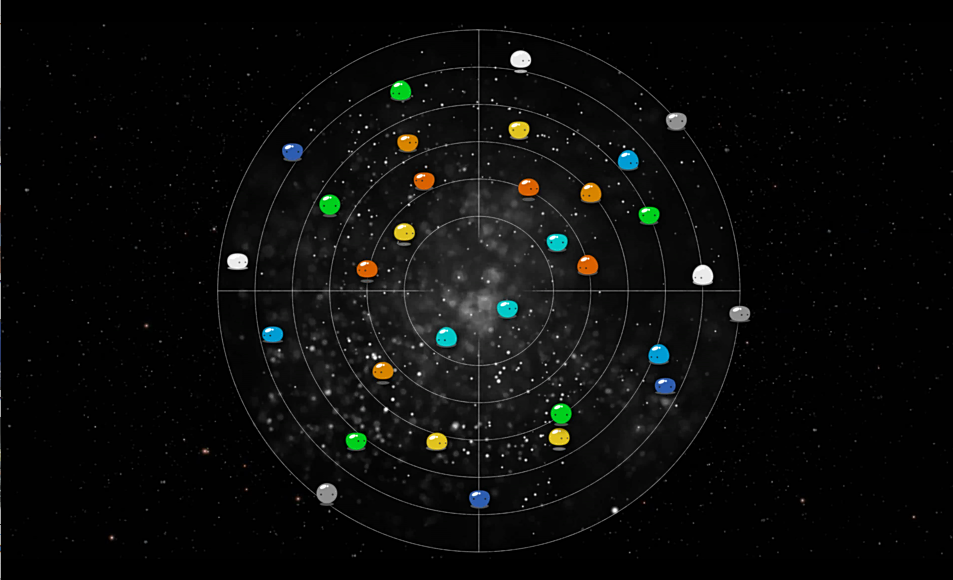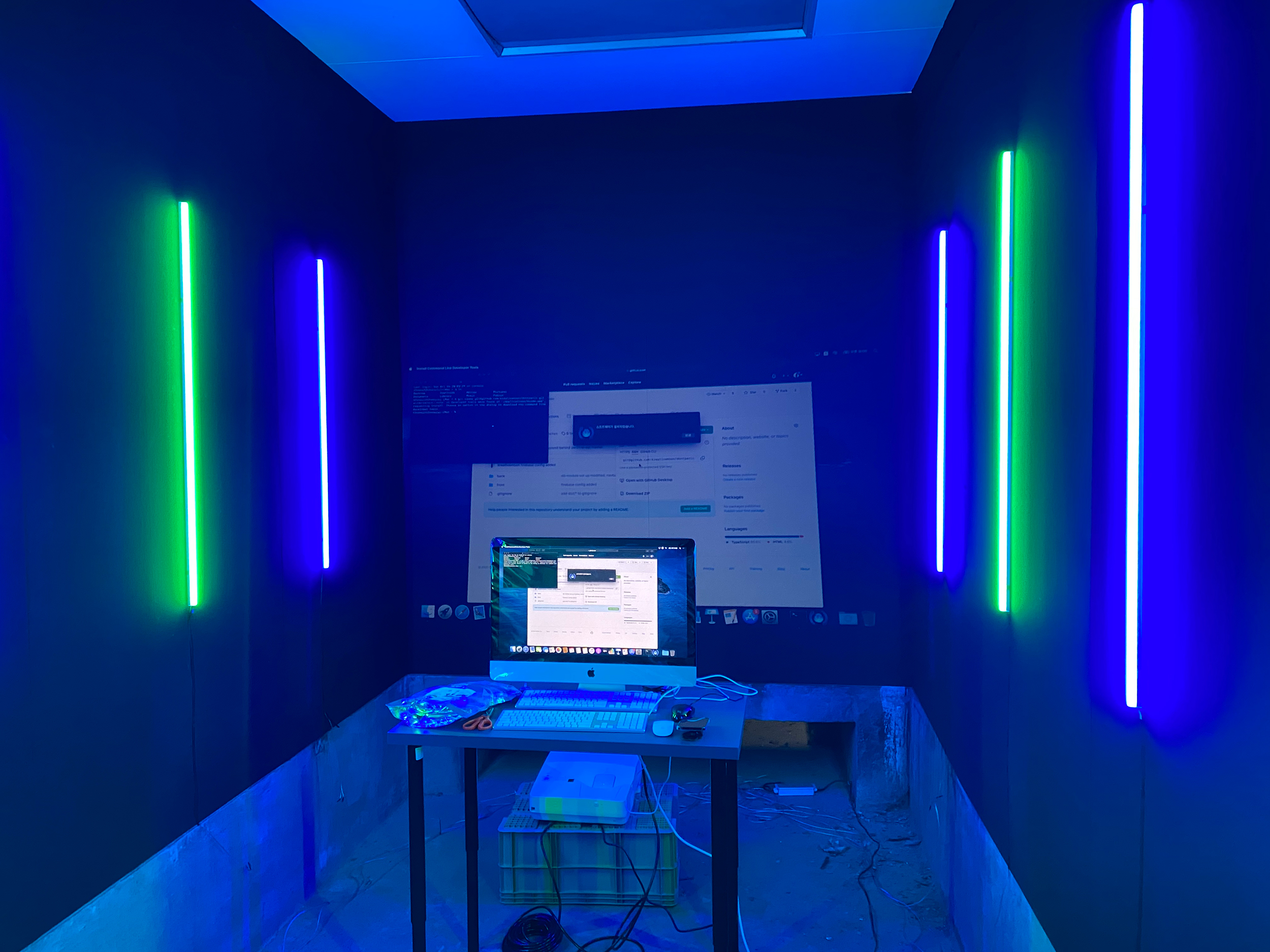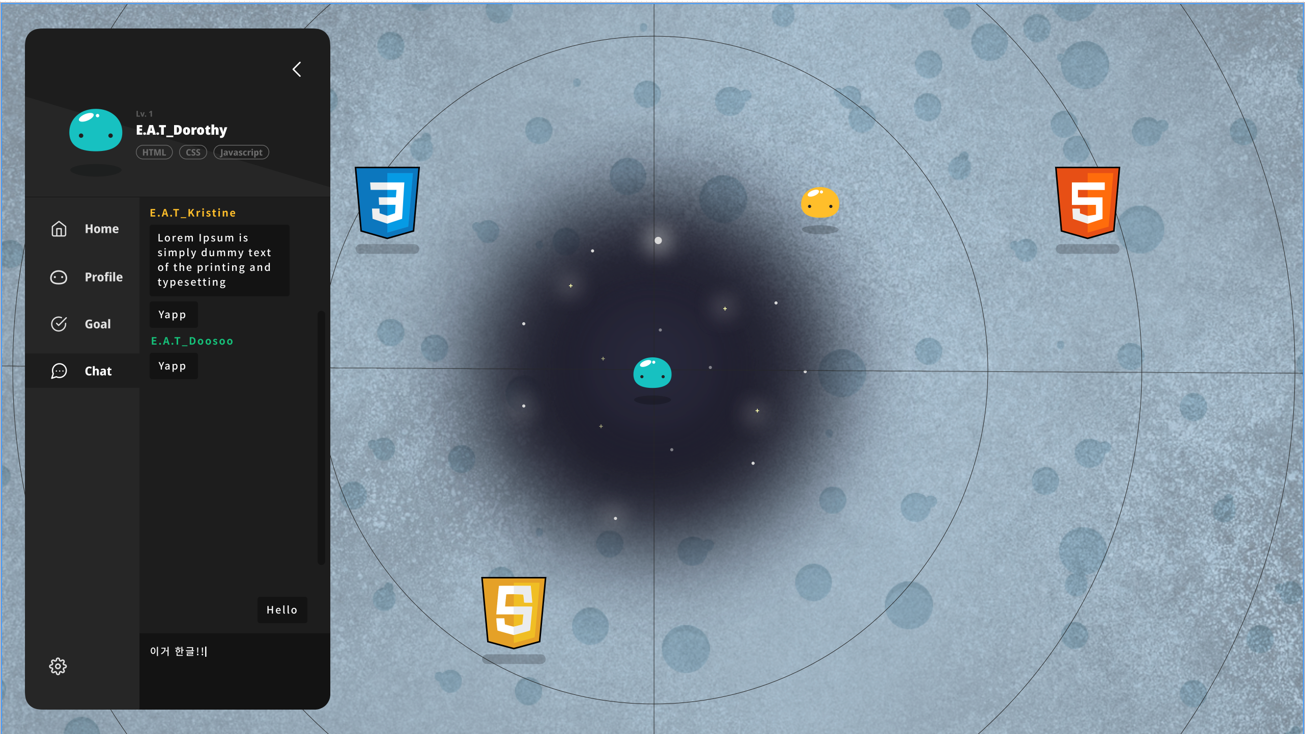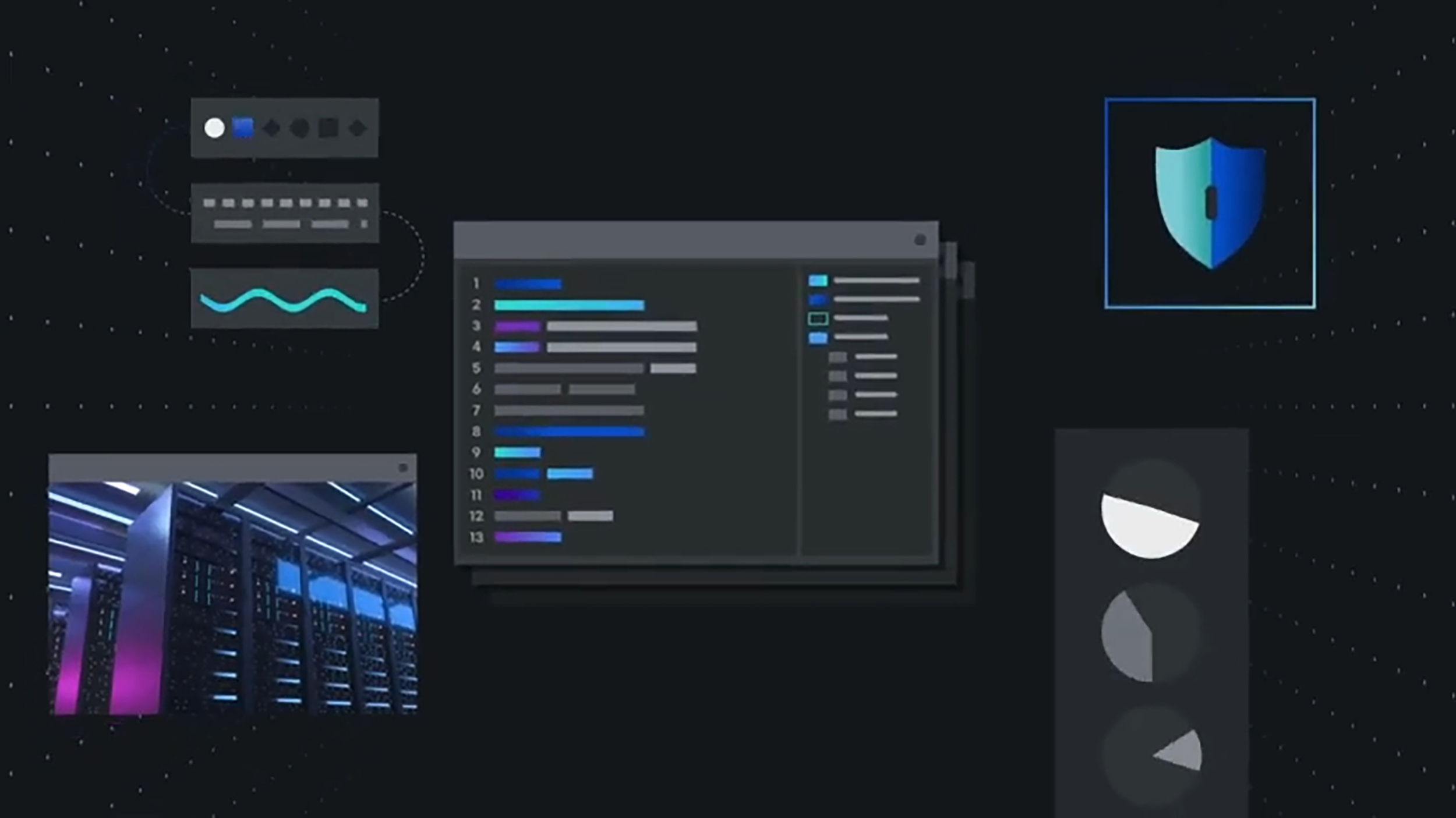The new educational platform created by E.A.T <Don’t Panic> has no rank. Learners can develop and prove themselves as much as they want. It is totally up to the learner to develop and prove oneself, not depending on the rank within the system. E.A.T shows the importance of peer learning in a virtual space.
LAB NOTE Summary: Peer-learning education platform
Is it possible to bring out the educational experiences online? The educational experience we are talking about is centered on learning, not on classes or lectures. In other words, we wanted to experiment with a new educational system where learners could actively learn, find motivation, develop, and evaluate themselves within the metaverse.
The peer learning is at the heart of educational experiments within the metaverse. It is not a unilateral education by lecturers, but the growth through peer-to-peer learning. In the peer learning method, a learner can become both a professor and an evaluator. The learner can access online spaces, meet with colleagues, and grow by working on projects with them. The elements of the game motivate learners, and the studied data is communicated as visualized information. It is also a report card. Within the system, the rank does not matter anymore. It is only up to the learner to develop and prove oneself.
Title
Don’t Panic:
Don’t Panic is a metaverse training space, not a physical one. Everyone can become a teacher or a student. College and corporate classes are also available. We hope the space becomes where various educational experiments take place. The education we pursue does not give an answer. There is neither an instructor nor a fellowship. There are only a system and colleagues. It is an educational system that seeks answers with colleagues. It is called the peer learning.
Observe
“There is a strong need for innovation in public education around the world. Now that a digital world has emerged, traditional education systems are not enough. People are beginning to realize that there is a gap between education at school and education that is needed in the real world. Educational experiments are also being actively carried out to quench a thirst for new educational systems.”
Metaverse is a very good laboratory. Unlike the existing public education system, which requires a huge cost of failure due to the needs of national infrastructures, it enables various educational experiments in the metaverse without paying a large opportunity cost. Peer learning in the metaverse, through the Don’t Panic project, is one such educational experiment.
Question
“Can it replace all education?” It does not replace traditional education. It presents new educational possibilities. There are many ways to learn. Let’s imagine a new smartphone in your hand. Someone will learn how to use it by watching YouTube, and someone will learn by tapping menus one by one. Also, someone may learn by memorizing the manual. Each person has a different learning method that suits them. Traditional schools do not offer learning methods for everyone. Schools that offer different learning methods are also needed.
The IT industry has been experiencing rapid changes. When we finally reach a level where we can communicate our knowledge, new technology appears again and e will have to acquire the new technology again. That is why software developers need to learn how to learn. The Don’t Panic project proposes a way for learners to learn actively on their own wills through peer learning.
Objective
“Is it different from traditional online learning?” It is not easy to define, but if we draw a line between the metaverse and traditional services, the difference is an experience. The traditional services have a tightly designed user story. Users gain value by performing system-induced actions in space.
Metaverse creates stories by users, not producers. No one knows what the users will do in the space. In the Don’t Panic project, created on the theme of education, expects learning to happen, but the users must create their stories about the ways to learn.
Hypothesize
“How can we motivate ourselves?” We have to find motivations by ourselves for learning. Even if we started work with a strong motivation, we get tired and feel like quitting after time passes. Learning and developing oneself is even more so. Because we have trouble recognizing what we have learned and how we have come a long way.
The Don’t Panic project provides a metaverse space where people with similar motivations for learning software can gather. In this space, everyone becomes colleagues and helps each other’s growth. You can see your growth through the growth of each other which is quite similar to you. There is no greater motivation for growth than witnessing own growth process.
Methodologize
“In the metaverse space, learners are connected to the online space with virtual characters to make friends. Learners learn by performing missions consisting of project-based problems with their peers. In order to complete a mission, a learner must prove the progress of the mission to a colleague. The learner can see own growth as a developer in the process of continuing missions.”
In order for the learner to carry out the project given in the mission, the learner must write code. The learner can write the code on its own, but can also get help from colleagues through the Document platform. After writing the code, the learner can access the Grading system provided by the metaverse and verify the result of the written code (the result of the mission). If the code was verified by the system, then it is re-evaluated by colleagues. From technical aspects such as code readability, logic, attitude to problem handling, to communication skills, the learner will receive feedback from colleagues that the system cannot evaluate. Peer assessment is both an evaluation and a learning method. In order to find defects in the code that has been verified by the system, it is necessary to use all of one’s logic. The time to evaluate the code of a colleague is also a time to learn new learning methods and approaches to problems through each other.
About the artist
E.A.T is a team consisting of Doosoo Jung, a system engineer, MoonHyung SunWoo, a developer, and EunJin Kim, a UI designer, who aims to implement a new paradigm of education in an online environment. All members are working in different fields, but they have gathered to create a better education through their own experiences. We propose a new educational metaverse platform as a solution that allows learners who are the main subjects of learning to actively learn in an online environment and achieve motivation-growth-evaluation.





